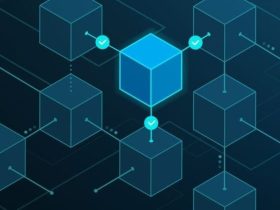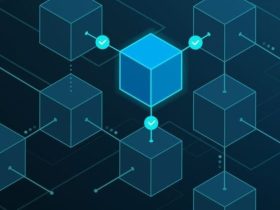Welcome to today’s edition of AI Dispatch, your comprehensive daily briefing on the latest trends and innovations shaping the world of artificial intelligence. In this deep dive, we bring you an op-ed–style analysis of groundbreaking news from various corners of the AI universe. From unexpected applications in the adult toy industry to sweeping transformations in journalism, government, cybersecurity, and social media, the stories we cover today illustrate the diverse and disruptive influence of AI across multiple sectors.
As AI continues to redefine our world, today’s headlines underscore how technology is not only evolving within established fields but also making surprising inroads into unexpected industries. We begin with a look at how a Chinese sex doll manufacturer is leveraging AI to boost user experience and drive sales—a story that challenges conventional ideas about technology and intimacy. Next, we explore a thought-provoking piece from the BBC that examines ethical debates surrounding AI applications and regulation in modern society. We then turn our attention to the transformative journey of the New York Times as it embraces internal AI tools to revolutionize newsroom operations.
The conversation continues with an analysis of workforce changes at the FDA’s Center for Devices and Radiological Health (CDRH) in the wake of AI integration, revealing both the promise and challenges of automation in regulatory bodies. We also examine how Google Chrome’s newly launched AI-powered security feature is set to redefine online safety and user privacy. Finally, we delve into Tencent’s recent market surge, following its integration of DeepSeek into WeChat—a move that highlights the strategic importance of AI for boosting consumer engagement and business performance in one of the world’s most dynamic tech ecosystems.
Throughout this article, we will provide detailed insights, opinion-driven commentary, and thought-provoking analysis on the implications these developments have on the broader AI industry. By weaving together the threads of innovation, regulation, and consumer impact, we aim to offer a panoramic view of how artificial intelligence is reshaping business, society, and even our personal lives.
Let’s explore today’s stories in detail.
Chinese Sex Doll Maker Leverages AI to Revolutionize Adult Toys
Source: SCMP
In a move that underscores the unexpected reach of artificial intelligence, a prominent Chinese sex doll manufacturer has reported a significant jump in its 2025 sales figures, attributing the surge to the integration of AI technologies in its products. While the adult toy industry has long been known for its bold innovations, the application of AI to enhance user experience is opening up entirely new avenues for growth and personalization.
Redefining Intimacy with Intelligent Design
At first glance, the idea of infusing AI into sex dolls might seem like a novelty, but the implications are far deeper. By embedding machine learning algorithms, natural language processing, and adaptive behavior systems into their products, manufacturers are creating a new generation of intelligent adult toys. These devices not only respond to user input in more lifelike ways but are also capable of learning and evolving over time. This evolution is transforming the traditional notion of intimacy, as the technology strives to provide personalized companionship that adapts to individual preferences and moods.
The Chinese manufacturer in question has harnessed AI to optimize everything from gesture recognition and facial expression simulation to interactive conversation capabilities. Users report that the AI-driven features provide an experience that is more engaging and emotionally resonant than what was previously available. In a market where differentiation is key, leveraging AI has enabled this company to stand out, attract a broader customer base, and achieve a dramatic sales uptick.
The Intersection of Technology and Eroticism
This development forces us to confront the intersection of cutting-edge technology with the most human of needs—connection and intimacy. In an era where loneliness and social isolation are becoming increasingly common, AI-powered adult toys may offer a form of companionship that is both innovative and deeply personal. Critics, however, warn of the potential risks, questioning whether such technology might lead to further isolation or even ethical dilemmas regarding the simulation of human relationships.
In our opinion, the use of AI in this context highlights a broader trend: the relentless push of technological boundaries into all aspects of our lives, regardless of societal taboos or historical norms. It challenges us to rethink what constitutes a relationship and compels the industry to address ethical concerns head-on. As these intelligent machines become more sophisticated, developers and regulators alike must work together to ensure that innovations in adult technology serve to empower rather than isolate their users.
Implications for the AI Industry
From an industry perspective, this story is a compelling case study in how AI can be applied to niche markets with tremendous growth potential. The integration of AI into sex dolls is not merely a gimmick; it is an indicator of the expanding scope of AI applications, where technology meets deeply personal experiences. This development may pave the way for similar innovations in other non-traditional sectors, inspiring companies to look beyond conventional applications and harness AI to create products that resonate on an emotional level.
Moreover, the rapid sales growth experienced by the manufacturer signals a robust consumer appetite for personalized, adaptive technology. This trend is likely to have ripple effects throughout the AI ecosystem, spurring further investment and research into advanced human-machine interactions. As the industry matures, we anticipate more companies will venture into unexplored territories, using AI to transform industries that were once considered off-limits for technological disruption.
BBC Analysis: Navigating the Ethical Labyrinth of AI Applications
Source: BBC
A recent feature by the BBC has brought to light some of the most pressing ethical debates surrounding AI today. As AI becomes increasingly integrated into various aspects of our lives—from healthcare and finance to personal entertainment—the need for robust ethical guidelines and regulatory oversight has never been more urgent.
The Ethical Dilemma: Innovation vs. Responsibility
The BBC’s report delves into the complex balancing act between fostering innovation and ensuring ethical responsibility. At the heart of the discussion lies a fundamental question: How do we promote the rapid advancement of AI while safeguarding against unintended consequences such as bias, privacy violations, and the erosion of human autonomy?
One of the key points highlighted in the article is the challenge of algorithmic bias. Despite significant strides in AI development, machine learning models are still prone to biases that can inadvertently perpetuate social inequalities. The report emphasizes that as these technologies become more ingrained in decision-making processes, from hiring practices to judicial sentencing, the stakes are incredibly high. Ensuring fairness and transparency in AI systems is not just a technical issue—it is a moral imperative.
The Call for Greater Accountability
Another critical theme emerging from the BBC piece is the call for enhanced accountability in AI development and deployment. Industry leaders, academics, and policymakers are urging for clearer standards and regulatory frameworks that can keep pace with the rapid evolution of AI technologies. The report cites several initiatives aimed at creating a more ethical AI landscape, including proposals for independent auditing of algorithms and the establishment of ethics boards within tech companies.
From our perspective, the BBC’s analysis is both timely and necessary. As the AI revolution accelerates, it is essential that stakeholders at all levels—from developers to legislators—engage in honest, informed discussions about the long-term impacts of these technologies. The ethical challenges posed by AI are multifaceted, and addressing them will require a collaborative effort that transcends borders and sectors.
Industry Implications and Future Directions
The ethical debates highlighted by the BBC are likely to have far-reaching implications for the AI industry. Companies that fail to adequately address issues of bias, privacy, and accountability risk not only legal repercussions but also a loss of public trust—an asset that is invaluable in today’s digital age. As consumers become more aware of the ethical dimensions of AI, transparency and fairness will increasingly become competitive differentiators.
In addition, the push for ethical AI could lead to a surge in innovative solutions designed to mitigate these risks. For instance, advancements in explainable AI (XAI) and techniques for debiasing machine learning models are areas of intense research and investment. The evolution of these technologies will be critical in building a future where AI can be both transformative and trustworthy.
The BBC report serves as a reminder that while AI holds immense promise, its development must be guided by ethical considerations that protect human rights and promote social good. This balancing act between innovation and responsibility will define the trajectory of AI in the years to come.
New York Times Embraces Internal AI Tools to Transform Newsrooms
Source: Semafor
In a bold move that underscores the transformative power of artificial intelligence, the New York Times has announced its strategic shift toward incorporating internal AI tools to optimize newsroom operations. According to a recent report by Semafor, the storied media organization is leveraging AI to enhance everything from content creation and editing to audience engagement and data analysis.
Reinventing Journalism Through Technology
The New York Times has long been recognized as a pioneer in digital journalism, and its latest foray into AI-driven processes is a natural extension of its innovative spirit. By adopting advanced machine learning algorithms and natural language processing techniques, the newspaper aims to streamline routine tasks and allow its journalists to focus on high-impact reporting and investigative work. The internal AI tools are designed to assist with tasks such as fact-checking, trend analysis, and even drafting preliminary content based on real-time data insights.
From an editorial standpoint, the integration of AI offers the potential to enhance both speed and accuracy in news production. In an era where information is generated at breakneck speed, having AI-powered systems to sift through vast datasets and identify key trends can provide a critical edge. The New York Times’ initiative not only reinforces its commitment to high-quality journalism but also sets a precedent for how traditional media can adapt to a rapidly changing technological landscape.
The Intersection of AI and Editorial Integrity
Of course, the adoption of AI in journalism is not without its challenges. Critics have raised concerns about the potential for automated systems to inadvertently introduce bias or dilute the human touch that is essential to storytelling. However, proponents argue that when used judiciously, AI can serve as a powerful complement to human creativity and editorial judgment.
In our view, the New York Times’ strategy represents a forward-thinking approach to a complex problem. By harnessing the strengths of both human insight and machine efficiency, the organization is charting a path toward a more agile and responsive newsroom. The key will be to maintain a careful balance—ensuring that AI enhances, rather than replaces, the nuanced understanding that experienced journalists bring to their craft.
Broader Implications for the Media Industry
The move by the New York Times is likely to have ripple effects throughout the media industry. As more news organizations explore the potential of internal AI tools, we can expect to see significant shifts in how information is gathered, processed, and disseminated. The integration of AI into newsroom workflows may lead to faster reporting cycles, more personalized content for readers, and ultimately, a more dynamic media landscape.
Moreover, this trend underscores a broader paradigm shift in the relationship between technology and journalism. As newsrooms become more tech-savvy, the lines between content creation and data science will continue to blur. This convergence is not only transforming the business models of traditional media but also redefining what it means to report the news in the digital age.
For us, the New York Times’ commitment to embracing internal AI tools is a testament to the evolving nature of journalism. It highlights the need for media organizations to continuously adapt to technological advancements in order to remain competitive and relevant. In doing so, they can better serve an increasingly discerning audience while upholding the core values of accuracy, integrity, and accountability.
FDA Layoffs Amid AI Integration: A New Era of Regulatory Transformation
Source: StatNews
In a surprising yet telling development, StatNews reports that the FDA’s Center for Devices and Radiological Health (CDRH) is undergoing significant layoffs as part of a broader initiative to integrate artificial intelligence into its regulatory processes. This move reflects the growing trend of automation and digital transformation within government agencies, as regulators seek to harness the power of AI to improve efficiency and accuracy.
Balancing Efficiency with Accountability
The restructuring at the FDA’s CDRH has sparked a heated debate about the role of AI in government operations. On one hand, the integration of AI tools promises to streamline complex regulatory processes, reduce human error, and expedite decision-making. On the other hand, the layoffs signal a shift toward automation that raises questions about the future of human oversight in critical regulatory functions.
Critics worry that reducing the workforce could compromise the depth of regulatory scrutiny, potentially allowing for oversight gaps in a sector where precision is paramount. However, proponents argue that AI can complement human expertise rather than replace it entirely. By automating routine tasks such as data analysis, AI can free up skilled personnel to focus on more nuanced regulatory challenges that require human judgment and ethical considerations.
The Implications for Regulatory Innovation
The FDA’s decision to integrate AI-driven processes is emblematic of a broader trend toward digital transformation in the public sector. As government agencies worldwide grapple with mounting pressures to increase efficiency and reduce costs, the adoption of AI is emerging as a viable strategy to meet these demands. The transition, however, is not without its risks. Effective oversight, continuous training, and robust ethical frameworks will be essential to ensure that the benefits of AI are realized without compromising public safety or accountability.
In our opinion, the FDA’s restructuring highlights the inherent tension between technological advancement and human employment. While automation can drive efficiency and innovation, it also necessitates a careful reevaluation of workforce strategies and the role of human expertise in critical decision-making processes. The long-term success of such initiatives will depend on the ability to strike a balance—leveraging the strengths of AI while maintaining a robust human presence in areas where ethical and interpretative insights are irreplaceable.
A Cautionary Tale and a Call to Action
For the broader AI community and policymakers, the FDA’s experience offers a cautionary tale. It serves as a reminder that the integration of AI into regulatory frameworks must be approached with thoughtful planning and transparent communication. As the industry continues to evolve, it will be crucial for government agencies, private companies, and the public to engage in an open dialogue about the implications of AI-driven automation, particularly in sectors that have traditionally relied on human oversight.
The layoffs at the CDRH are not merely a cost-cutting measure; they signal the beginning of a transformative journey toward a more digitized and data-driven regulatory landscape. Whether this transition will lead to improved outcomes or unforeseen challenges remains to be seen, but one thing is clear: the role of AI in government is set to expand, and its impact will be felt across industries and society as a whole.
Google Chrome Unveils AI-Powered Security Feature for All Users
Source: Bleeping Computer
In a move that underscores the pervasive influence of artificial intelligence in enhancing digital safety, Google Chrome has rolled out a groundbreaking AI-powered security feature to all users. As reported by Bleeping Computer, this new functionality is designed to provide an added layer of protection against cyber threats by leveraging advanced machine learning algorithms to detect and neutralize malicious activity in real time.
Redefining Cybersecurity with AI
The integration of AI into Google Chrome’s security framework represents a significant step forward in the battle against increasingly sophisticated cyber threats. Traditional security measures, while effective to a degree, have struggled to keep pace with the rapid evolution of malware, phishing schemes, and other forms of online fraud. By harnessing the power of AI, Google is effectively equipping its browser with the ability to learn from emerging threats, adapt to new attack vectors, and provide proactive defense mechanisms for its users.
This innovative security feature employs deep learning techniques to analyze patterns in web traffic and user behavior, identifying anomalies that could signal a potential threat. Once a threat is detected, the system can take immediate action—whether that means blocking access to a suspicious site or alerting users to potential risks—thus significantly reducing the window of opportunity for cybercriminals.
Impacts on User Trust and Digital Experience
The launch of Google Chrome’s AI-powered security feature is likely to have a profound impact on user trust and overall digital experience. In an age where data breaches and privacy violations are all too common, the assurance of robust, AI-driven protection is a welcome development for millions of users worldwide. This initiative not only reinforces Google’s commitment to user safety but also sets a new benchmark for the industry, prompting other tech giants to explore similar AI-enhanced security measures.
From our perspective, the integration of AI in cybersecurity is a natural and necessary evolution. As cyber threats become more complex, so too must the defenses designed to thwart them. Google’s proactive approach to integrating AI into its security infrastructure is a prime example of how technology can be harnessed to create a safer, more resilient digital environment. However, it also raises important questions about the future role of AI in managing online security, the need for continuous updates, and the potential challenges of maintaining user privacy in an increasingly surveilled digital ecosystem.
Looking Ahead: The Future of AI in Cybersecurity
The rollout of AI-powered security features in Google Chrome is likely to catalyze a broader shift in the cybersecurity landscape. As more companies invest in AI research to enhance their security protocols, we can expect to see rapid advancements in threat detection, response times, and overall digital resilience. This trend will be critical in safeguarding not only individual users but also large-scale digital infrastructures that underpin modern society.
In conclusion, Google Chrome’s latest security update is more than just a technical enhancement—it is a statement about the future of digital safety in an AI-driven world. By setting a new standard for proactive, intelligent security, Google is paving the way for a safer and more secure online experience for all.
Tencent’s DeepSeek Integration Sparks Market Surge in WeChat
Source: Bloomberg
In a striking demonstration of the strategic value of artificial intelligence, Tencent has reported a notable surge in its share prices following the integration of DeepSeek—an advanced AI-driven search and recommendation engine—into its flagship messaging platform, WeChat. Bloomberg’s coverage of this development highlights how the fusion of AI and social media is propelling Tencent to new heights, redefining user engagement and opening up fresh revenue streams.
Enhancing User Engagement Through Intelligent Search
Tencent’s integration of DeepSeek into WeChat represents a bold move to enhance the platform’s functionality by leveraging AI-powered insights. DeepSeek’s sophisticated algorithms are designed to understand user behavior, preferences, and context in order to deliver highly personalized search results and content recommendations. For a platform like WeChat, which serves as an all-in-one hub for communication, commerce, and entertainment, the ability to tailor content to individual users is a game-changer.
The AI integration not only improves the overall user experience but also has significant implications for monetization. By delivering more targeted advertisements and recommendations, Tencent can drive higher engagement and conversion rates, ultimately boosting its bottom line. Investors have responded positively to this strategic move, as evidenced by the sharp uptick in Tencent’s share prices.
A Paradigm Shift in Social Media and AI Integration
The success of DeepSeek in enhancing WeChat’s capabilities is indicative of a broader paradigm shift within the tech industry. As AI continues to mature, its integration into social media platforms is reshaping how content is curated, delivered, and consumed. This convergence of social media and AI is not just about enhancing user experience—it’s about transforming entire business models and creating new value propositions that were previously unimaginable.
From our standpoint, Tencent’s move is a powerful illustration of the strategic opportunities that AI presents for companies operating in the digital space. The integration of DeepSeek is not only a technical upgrade; it is a signal that AI-driven personalization is becoming a critical competitive differentiator. As other tech giants take note, we can expect a wave of innovation that will further blur the lines between social media, e-commerce, and intelligent content delivery.
The Broader Market Implications
Tencent’s recent success story serves as a bellwether for the broader market. The enthusiastic response from investors underscores the growing recognition that AI integration is not merely a technological trend but a fundamental shift in how businesses operate and create value. As companies across various sectors begin to harness AI for personalization, efficiency, and innovation, the market is likely to witness a surge in investment in AI-related ventures.
In summary, Tencent’s integration of DeepSeek into WeChat marks a pivotal moment in the ongoing evolution of AI-powered social media. It highlights the transformative potential of AI to drive engagement, enhance user experiences, and unlock new revenue opportunities—trends that are set to define the future of digital business.
Synthesis and Future Outlook: The Convergence of AI Across Industries
As we reflect on today’s diverse array of stories, several overarching themes emerge that encapsulate the current state and future trajectory of artificial intelligence.
The Expanding Horizons of AI Applications
From enhancing the intimacy of adult toys to redefining the future of journalism and regulatory oversight, AI is proving to be an incredibly versatile tool that can be applied in ways both expected and surprising. This expanding horizon is a testament to the ingenuity of developers and the insatiable appetite for innovation across all sectors. Companies that embrace AI are not only driving growth in traditional industries but are also pioneering new markets that were once considered niche or even controversial.
Balancing Innovation with Ethical Responsibility
A recurring theme throughout today’s stories is the delicate balance between innovation and ethical responsibility. Whether it’s the need for robust ethical frameworks in AI applications, the importance of safeguarding user privacy in cybersecurity, or the challenges posed by workforce reductions in regulatory bodies, the AI community must navigate these issues with care and foresight. As AI continues to permeate every facet of society, maintaining public trust through transparency, accountability, and ethical practices will be paramount.
The Role of Personalization and User Experience
Personalization stands out as a key driver of many of today’s AI innovations. From Tencent’s intelligent DeepSeek integration to the customized experiences offered by AI-powered adult toys, consumers are increasingly demanding products and services that adapt to their individual needs. This shift toward hyper-personalization is likely to shape the future of AI, influencing everything from marketing strategies to product development and customer engagement.
AI as a Catalyst for Industry Transformation
Perhaps the most compelling takeaway from today’s briefing is the recognition that AI is not just an incremental improvement—it is a catalyst for transformational change. The news stories we’ve explored highlight how AI is fundamentally altering traditional business models, redefining user experiences, and even reshaping the competitive dynamics of entire industries. As AI becomes more integrated into everyday operations, companies that fail to adapt risk being left behind in an increasingly digital and data-driven world.
A Vision for the Future
Looking ahead, the trends discussed today paint an optimistic yet cautionary picture of the future of AI. On one hand, the potential for innovation is limitless. The continuous advancement of machine learning, deep learning, and neural networks promises to unlock new capabilities that can solve some of the world’s most pressing challenges. On the other hand, the rapid pace of change necessitates vigilant oversight and proactive measures to mitigate risks and ensure that the benefits of AI are widely shared.
In our view, the future of AI will be defined by the ability of both public and private sectors to harness its power responsibly. It will require collaborative efforts among technologists, policymakers, business leaders, and ethicists to create an ecosystem where innovation thrives without compromising ethical standards. The stories we’ve examined today offer a glimpse into this complex and dynamic landscape—a landscape where AI is not just a tool for efficiency but a driving force for societal evolution.
Conclusion: Embracing the AI Revolution
As we conclude today’s edition of AI Dispatch, several key insights emerge from our in-depth analysis of the latest trends and innovations in the AI sector:
-
Unexpected Applications and Market Growth:
The story of the Chinese sex doll manufacturer demonstrates that AI’s reach extends far beyond traditional tech sectors, proving that innovation can redefine even the most unconventional markets. -
Ethical Debates and Regulatory Challenges:
The BBC’s exploration of AI ethics underscores the urgent need for robust frameworks to guide AI development—ensuring that innovation does not come at the expense of fairness, privacy, or human dignity. -
Transformative Impact on Media and Communication:
The New York Times’ bold adoption of internal AI tools highlights the transformative potential of AI in reshaping journalism and streamlining complex workflows, enabling faster, more accurate reporting. -
Government Transformation Through AI Integration:
The FDA’s restructuring and subsequent layoffs at CDRH illustrate both the promise and challenges of integrating AI into government functions, prompting necessary debates on accountability and workforce evolution. -
Advancements in Cybersecurity:
Google Chrome’s rollout of an AI-powered security feature marks a significant leap forward in the fight against cyber threats, demonstrating how AI can enhance digital safety in an increasingly connected world. -
Market Momentum Driven by AI-Enhanced Platforms:
Tencent’s successful integration of DeepSeek into WeChat not only underscores the importance of personalized AI-driven user experiences but also highlights the market’s positive reception to transformative technological advancements.
Together, these developments paint a compelling picture of an industry in the midst of rapid transformation. Artificial intelligence is proving to be a catalyst for change across sectors—from the most intimate aspects of personal life to the grand stages of global media and regulatory frameworks. As stakeholders navigate this brave new world, the need for responsible innovation, ethical stewardship, and continuous adaptation has never been more pressing.
In closing, we encourage readers, industry professionals, and policymakers alike to view these trends not as isolated incidents but as part of a larger, interconnected narrative. The future of AI is being written every day, and by embracing both its potential and its challenges, we can help shape a world where technology serves as a force for good—empowering individuals, transforming industries, and ultimately, enhancing the human experience.
Thank you for joining us on this extensive exploration of AI trends and innovations. Stay tuned for tomorrow’s edition of AI Dispatch, where we will continue to bring you timely insights and thought-provoking analysis from the cutting edge of artificial intelligence.















Got a Questions?
Find us on Socials or Contact us and we’ll get back to you as soon as possible.